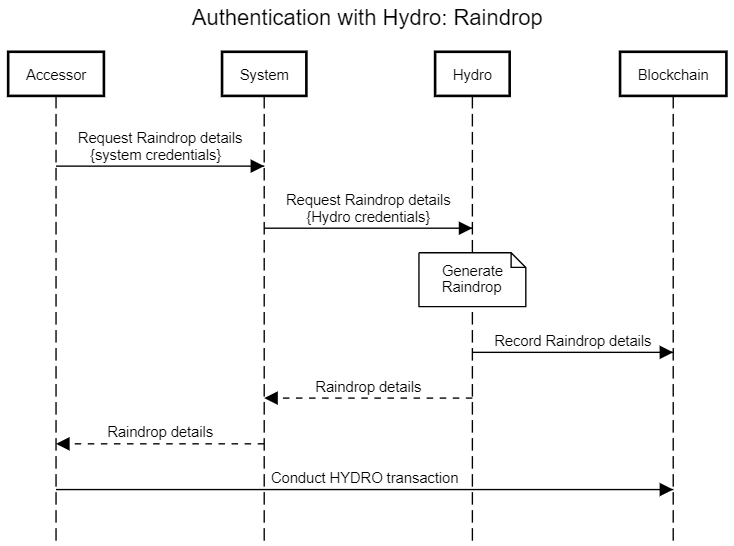Hydrogen, first look at the Hydro token and the benefits of the Raindrop system.

Let's Start with a little Description of the HYDRO project to summarize the rest of the post
Hydro enables new and existing private systems to seamlessly integrate and leverage the immutable & transparent dynamics of a public blockchain to enhance application and document security, identity management, transactions, and
artificial intelligence.
The proposed technology is called “Raindrop” - a transaction performed through a smart contract that validates private system access publicly, and can complement existing private authentication methods. The technology is intended
to provide additional security for sensitive financial data that is increasingly at risk from hacking and breaches.
Initial implementation of the Hydro Raindrop is performed on the Hydrogen API Platform. This modular set of APIs is available to enterprises and developers globally to prototype, build, test, and deploy sophisticated financial technology platforms and products.
Raindrop in Detail

Built on top of this Hydro public ledger is a blockchain-based authentication service, called “Raindrop.” This offers a distinct, immutable, globally viewable layer of security that verifies an access request is coming from an authorized source.
Private authentication protocols such as OAuth 2.0 offer varying levels of robustness and usefulness for the spectrum of use cases that exist. There is little need to compete with or attempt to replace these protocols - Hydro offers a way to enhance them by incorporating blockchain mechanics as a component of an authentication procedure. This can add a useful layer of security to help thwart system breaches and data compromises.
Rain contains packets of condensed water ranging from 0.0001 to 0.005 centimeters in diameter. In a typical rainstorm, there are billions of these packets, each of random size, velocity, and shape. Because of that, one cannot reliably predict the exact nature of rain. Similarly, every Hydro authentication transaction is unique and virtually impossible to have occurred by chance - that is why we call that Raindrops.
By using Raindrops, both the system and the accessor can monitor authorization attempts on an immutable public ledger. This blockchain-based transaction is decoupled from the basic system operations, occurs on a distributed network, and depends upon the ownership of private keys. Therefore, it serves as a useful validation vector.
The Raindrop authentication process involves 4 entities: an Accessor trying to gain access, a System that denies or grants access, the Hydro module (off-chain), and a Hydro smart contract (on-chain). An example of a System is a REST API, while an example of an Accessor is an API developer. The diagram below depicts how these entities interact during part of the process.

Because a video is probably ten times better to understand, this is one made by the team who clearly explain and show Raindrop system:
Conclusion
Hydro promises to enable private financial systems to seamlessly leverage the power of public blockchains as well as utilize niche technologies such as smart contracts to create secure, transparent, and low-cost financial products globally. Hydro Raindrop will definitly enhance security of private systems.
Website: https://www.hydrogenplatform.com/hydro
Telegram: https://t.me/projecthydro
Whitepaper: https://www.hydrogenplatform.com/white-papers/Hydro_Raindrop_White_Paper_English.pdf
Medium: https://medium.com/hydrogen-api
Github of the author of this post: https://github.com/connor187
Eth address: 0xab7e0c5e97940c046ee969691d52c6def4886a6a
image and video belong to © 2018 The Hydrogen Technology Corporation